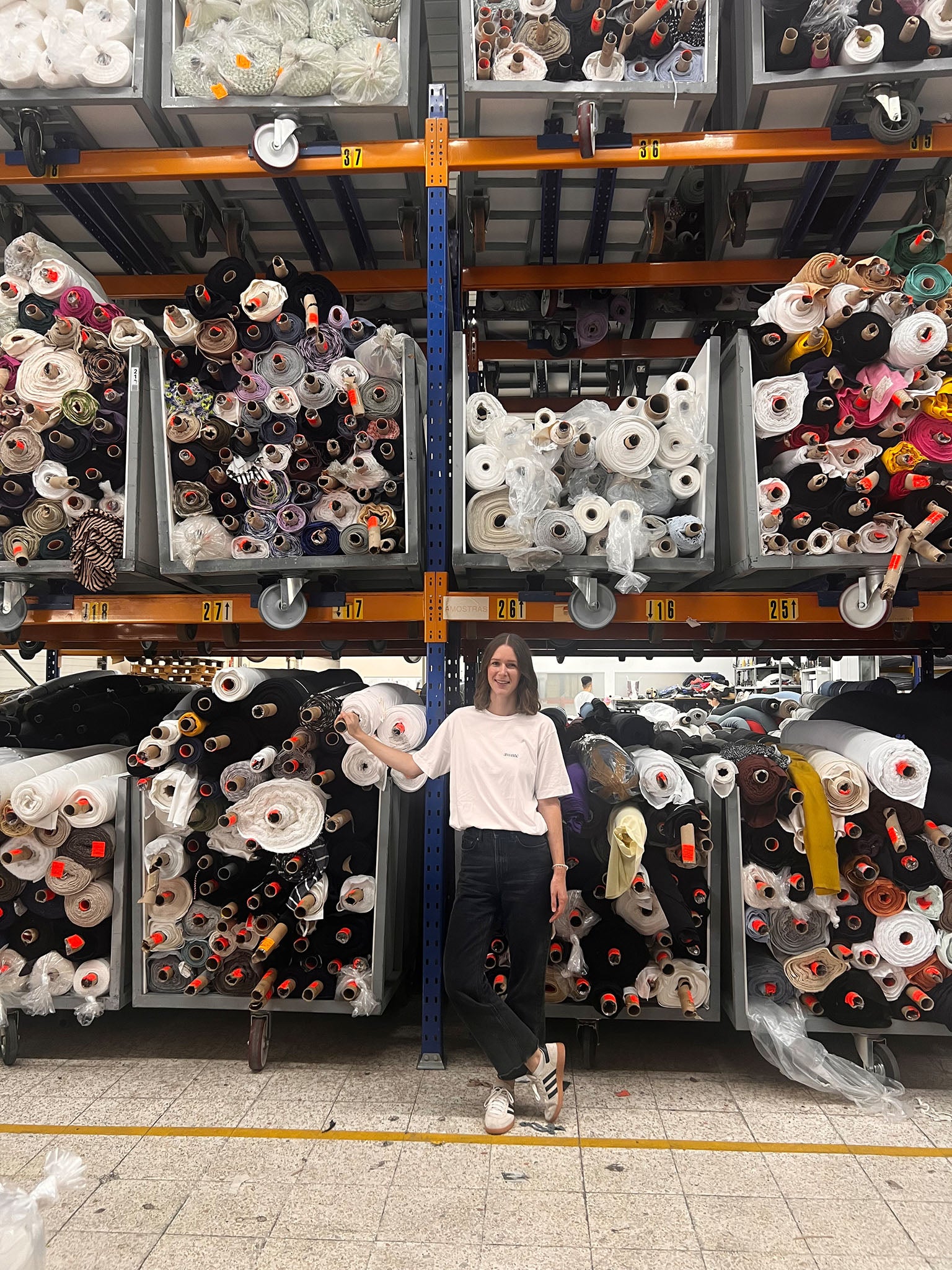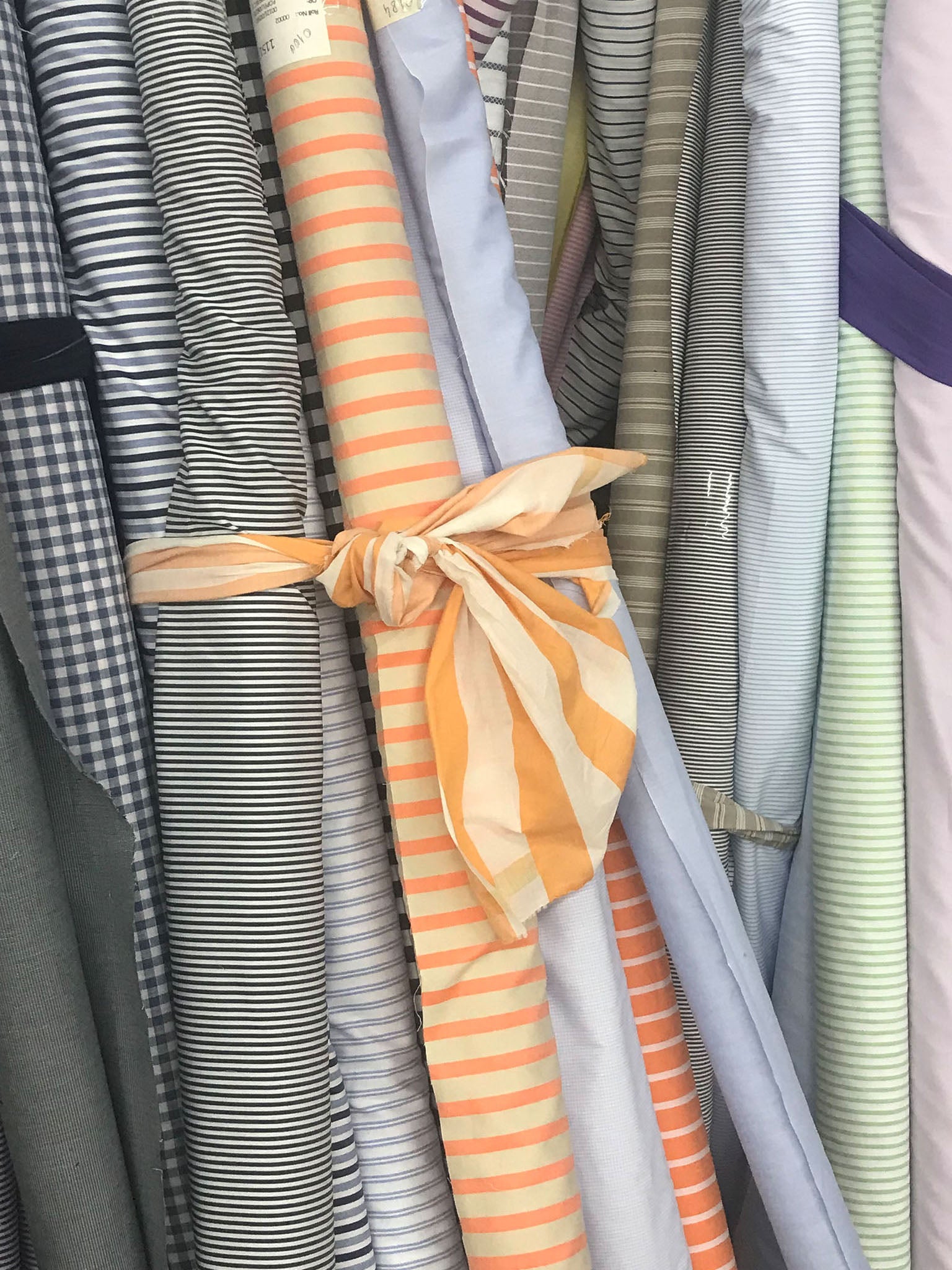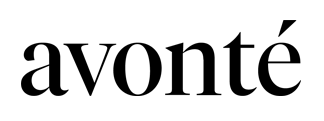TURNING LEFTOVER MATERIALS INTO SOMETHING NEW
Sustainability at avonté
The fashion industry produces vast amounts of fabrics every year that go unused. These so-called "deadstock" materials are a symptom of wasteful overproduction. At avonté, this is where we take action: we transform these high-quality, unused fabrics into durable, timeless pyjamas and loungewear.
What is Deadstock?
Industrial surplus, deadstock, overstock, leftover fabrics – many terms for the same problem. Deadstock refers to fabrics that were originally produced for fashion collections but were never used. Often, they are unused and in perfect condition – high-quality materials that are too good to gather dust in storage or be discarded.
DID YOU KNOW?
Overproduction
Around 12% of the materials produced for global clothing production end up as waste instead of being processed into clothing.* This corresponds to around 12 million tonnes per year.
Resource Consumption
The production of fabrics consumes enormous amounts of water, energy, and raw materials. Approximately 70% of the emissions in the global fashion industry come from the manufacturing process. This includes the production of raw materials, yarns, and fabrics, as well as dyeing processes and garment production.**
Disposal
Unused fabrics often end up in landfills or are incinerated – a burden on the environment and climate.
Why Do Deadstock Materials Occur?
Overproduction in the fashion industry has many causes, but three factors stand out in particular:
- Pre-production and Misjudgments
To keep up with the ever-shortening cycles in the fashion industry, new collections need to be on store shelves as quickly as possible. As a result, fabric suppliers often produce in advance, based on assumptions about the brands' needs. However, these forecasts are not always accurate, leaving excess, unused fabric. - Strict Quality Requirements and Color Trends
Fabrics are rejected after production, often due to minor color deviations. These no longer fit the color scheme of a collection. In the next season, different colors are often in trend, meaning that even these high-quality fabrics remain unused. - Design Decisions at the Brands
Within fashion brands, short-term design decisions are often made, such as removing certain colors or materials from collections. The impact of these decisions on existing fabric stocks is frequently not fully considered, leading to additional unused, high-quality surplus materials.



How avonté brings Deadstock back to life
At avonté, we have made it our mission to rescue exactly these leftover materials. We follow an upcycling strategy and use only unused overstock fabrics for our products, rather than producing new ones. In this way, we bring fabrics back into the circle, save resource-intensive production processes, and contribute to waste reduction.
With great care and attention to detail, we select materials that are durable, comfortable, and natural. Our production in Portugal ensures that each garment provides the quality and comfort you deserve – without wasting new resources.
*: Morlet, A., Opsomer, R., Herrmann, S., Balmond, L., Gillet, C., and Fuchs, L.. “A new textiles economy: Redesigning fashion’s future.”, Ellen MacArthur Foundation, 2017, https://emf.thirdlight.com/file/24/uiwtaHvud8YIG_uiSTauTlJH74/A%20New%20Textiles%20Economy%3A%20Redesigning%20fashion%E2%80%99s%20future.pdf .
**: Wigan, David. “FASHION ON CLIMATE. HOW THE FASHION INDUSTRY CAN URGENTLY ACT TO REDUCE ITS GREENHOUSE GAS EMISSIONS", McKinsey & Company and Global Fashion Agenda, 2020, https://www.mckinsey.com/~/media/mckinsey/industries/retail/our%20insights/fashion%20on%20climate/fashion-on-climate-full-report.pdf .
